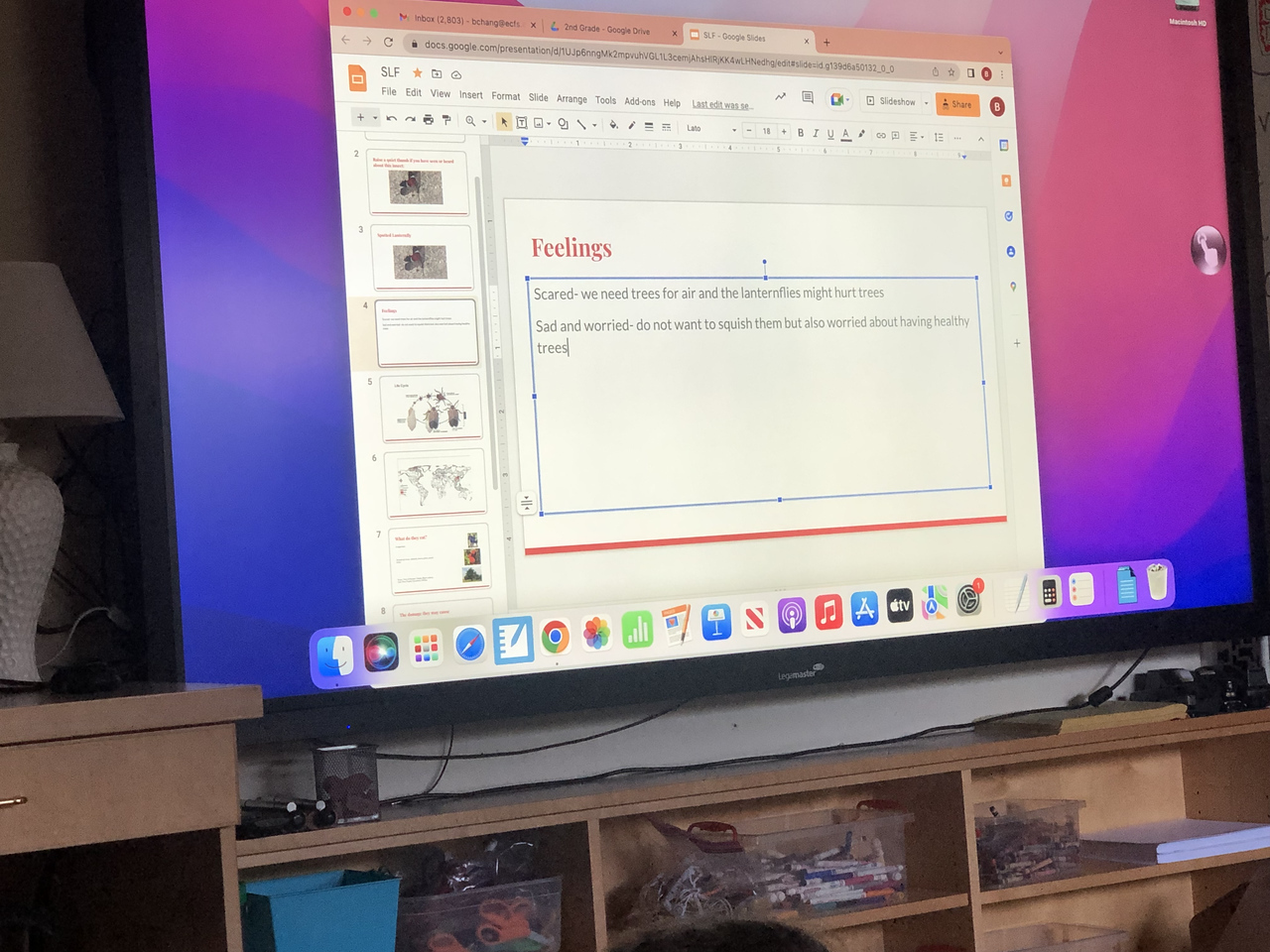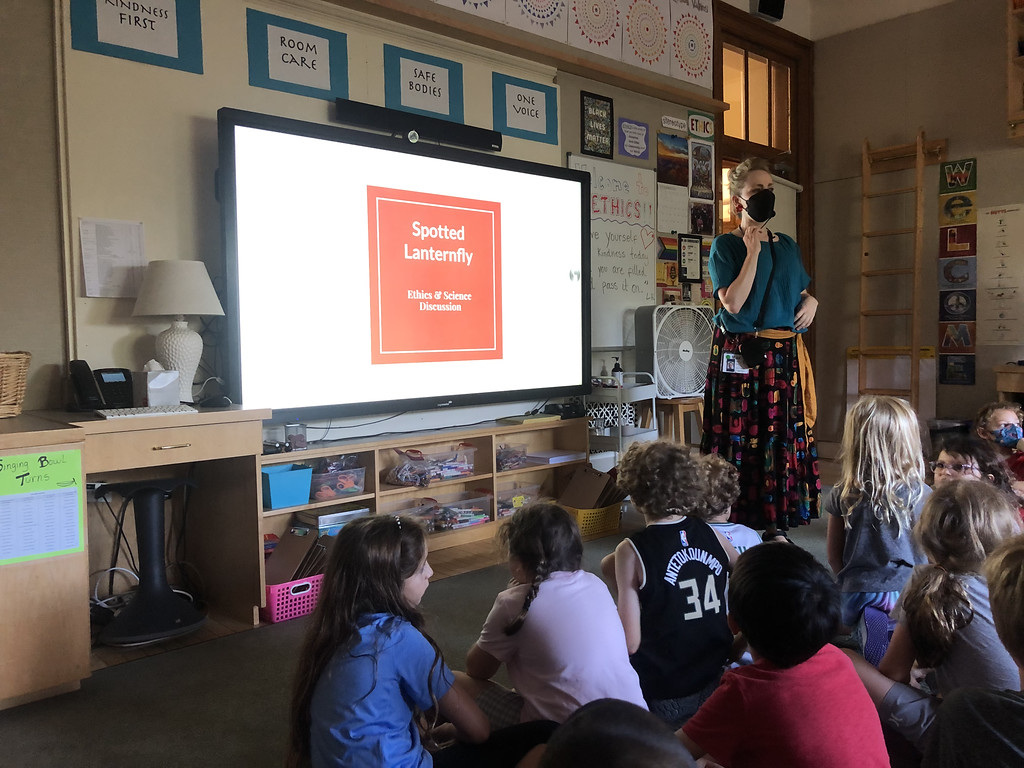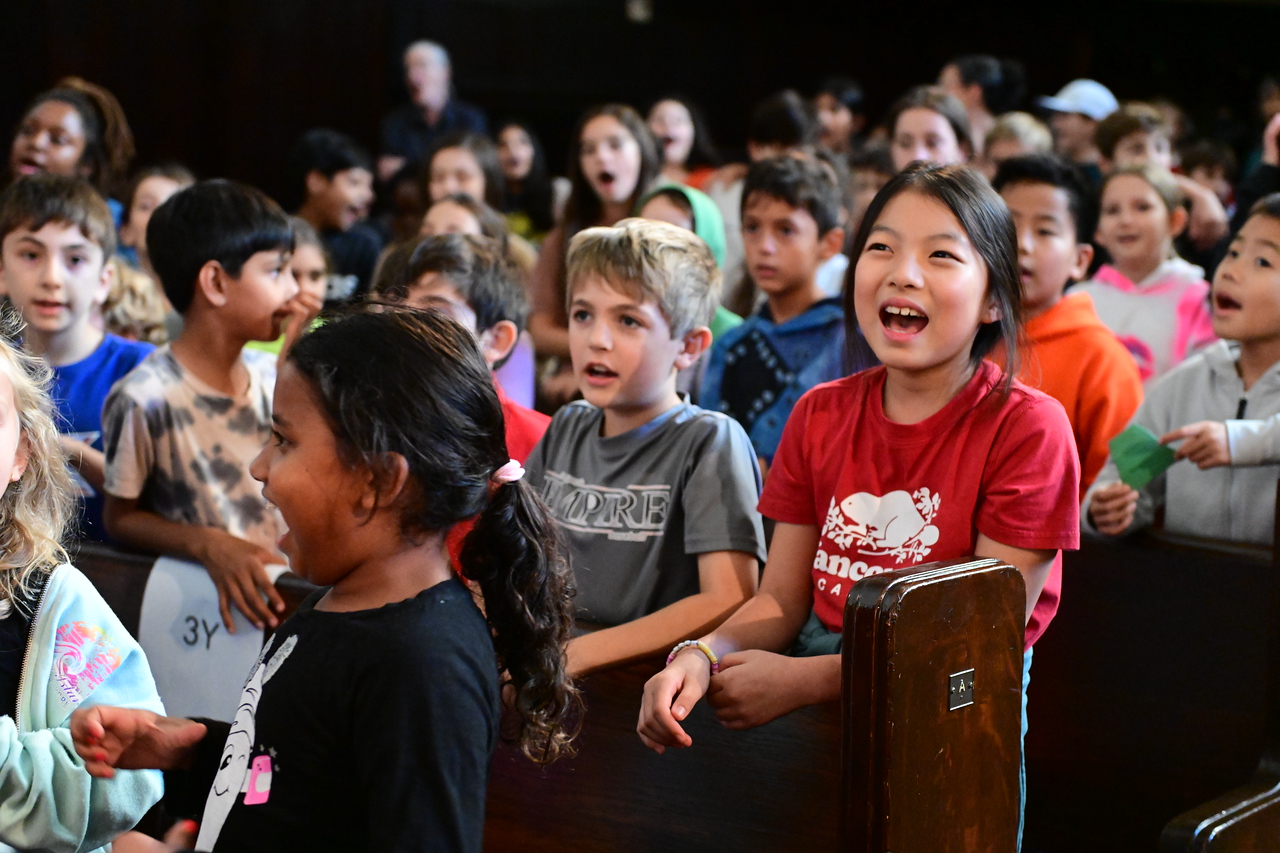Odds are you’ve seen — and maybe stepped on — a spotted lanternfly while strolling down Central Park West. The invasive species, with its characteristic bright, red wings, has become a social media sensation that has sparked a debate across New York City: Should you kill the lanternflies? And if you don’t want to, what would it mean for New York City’s natural ecosystem? What if your thoughts and feelings conflict?
The chatter about lanternflies was so lively amongst Ethical Culture’s students that it sparked an idea for science teacher Beverly Chang. Chang realized lanternflies are a relevant, real-life example of an “ethical dilemma.” She reached out to ethics teacher Cristina Ross, and together, they combined science and ethics to give their 2nd Grade students a safe space to engage in conversation.
This idea was concurrently bubbling in the minds of 3rd–5th Grade science teachers Barbara Downing and Jen Erdman, and ethics teacher Nelson Sanchez, who guided the ethical dilemma explorations with older students.
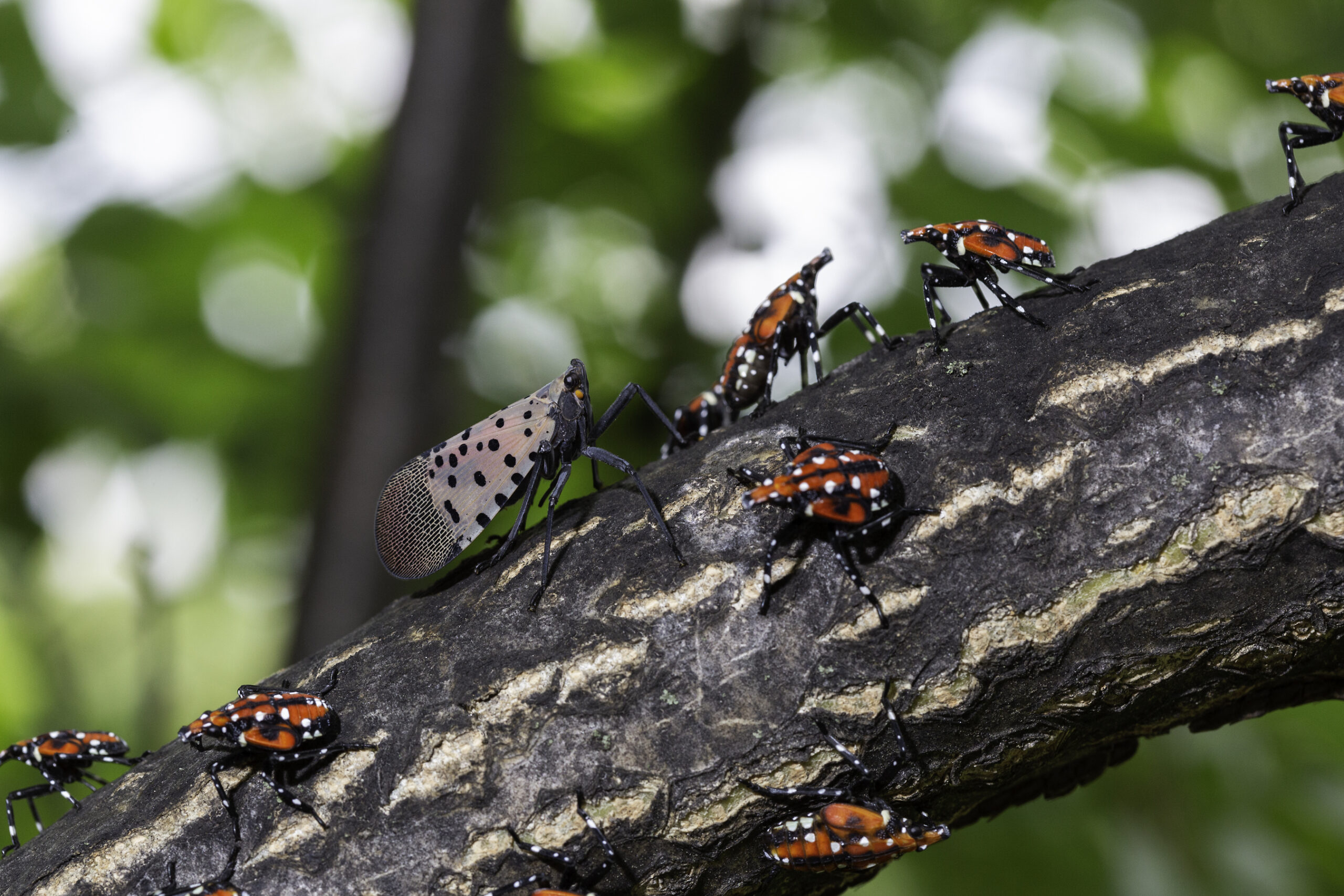
To begin, Chang led students through a comprehensive science lesson: “What do you already know about lanternflies?”
When one student jumped in to discuss the damage they were doing to trees in the city, Chang challenged them to look beyond that detail. Students learned that lanternflies are native to Asia and feed on many things, from grapevines to almond, cherry, maple, and black walnut trees. They discovered spotted lanternflies most likely arrived in North America via eggs laid on shipping containers and airplane cargo.
Chang emphasized the relationships between things in nature and explained the lanternfly life cycle. She asked, “why do you think the population of lanternflies is growing so quickly here in New York City?”
Aksel R. ’33 chimed in first: “Because there are not enough predators in our area to even out the life cycle!”
“Exactly,” Chang responded. “We do not have many of the lanternflies’ natural predators here in New York City.”
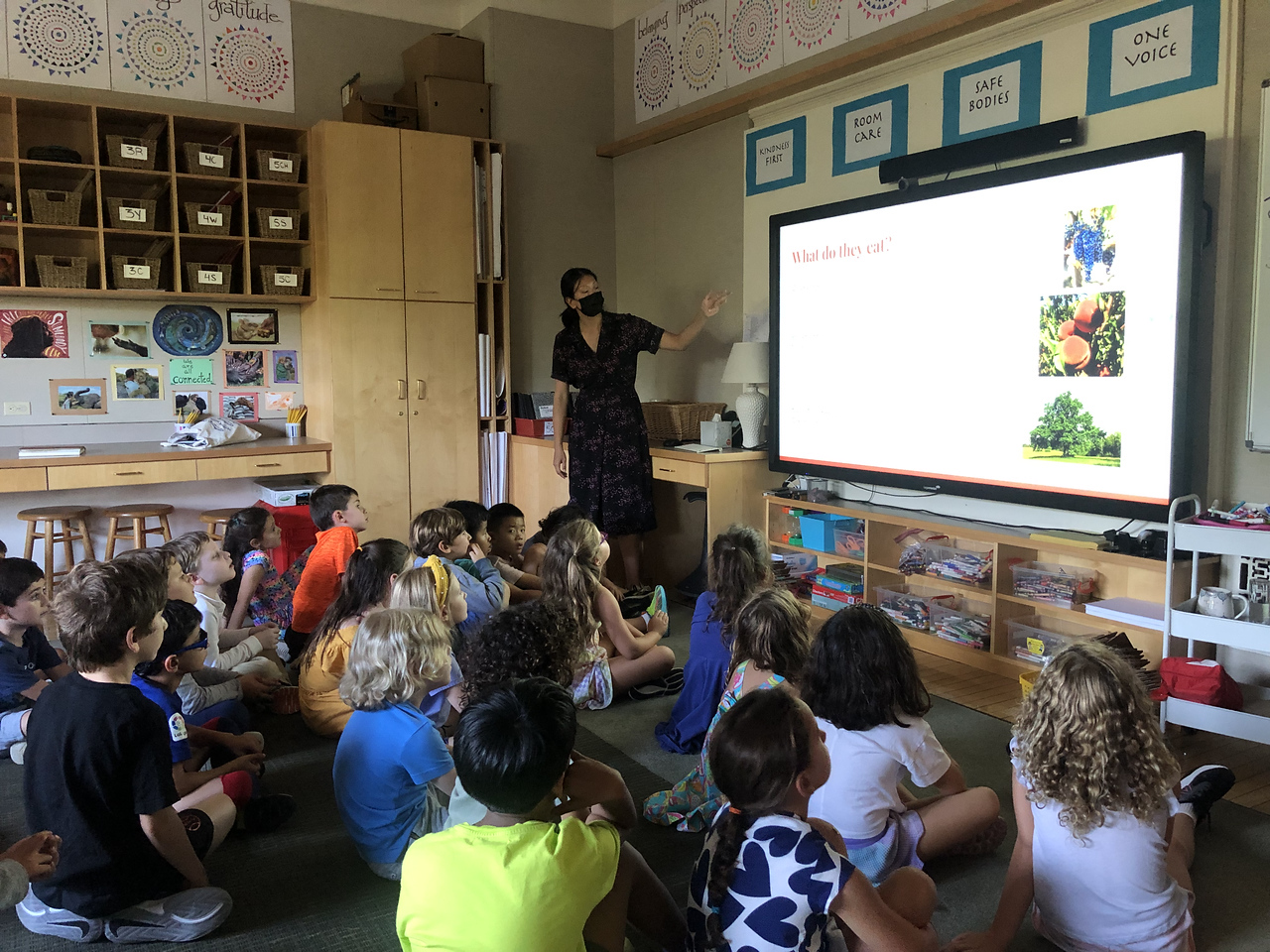
Once a healthy dose of curiosity and positivity about lanternflies had permeated the classroom, it was time for Ross to make an ethical connection. “Now that Beverly has explained the many scientific facts about spotted lanternflies, how are you feeling?” she asked the class.
“I’m scared. I’m not sure what this will mean for the trees. I don’t want us to run out of air,” replied Eva E. ’33.
“I’m feeling a little sad and angry,” said Mimi P. ’33. “I don’t want to lose trees or flowers, but I also don’t want to kill the lanternflies. If only they had something like kibble to eat.”
Tate I. ’33 explained that he couldn’t let go of his curiosity. He wanted to know everything there was to know about the incredible lanternflies. And another student, Noah G. ’33, made an interesting observation: “We use a lot of paper, which is also harmful to the environment. We’re actually not so different from the lanternflies.”
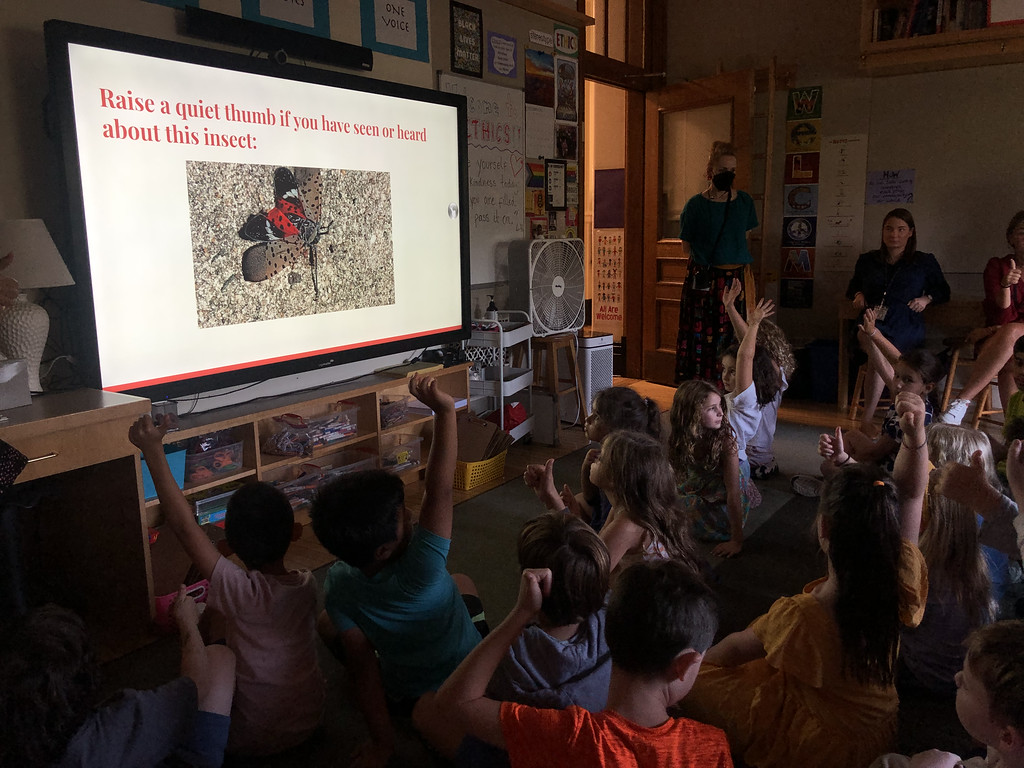
Once all students had the chance to share, Ross explained that the conflicting feelings they were experiencing resulted from an “ethical dilemma.” She continued, explaining that ethical dilemmas — which occur often — can cause internal uneasiness and sometimes even disagreements with others.
Dylan I. ’33 asked, “Then what should we do if we don’t want someone to squish a lanternfly?”
“Any topic connected to an ethical dilemma is not an easy topic,” Ross replied. “That’s what makes it a dilemma.”
Ross gave students a guide to them during challenging conversations:
- Pause to acknowledge how you are feeling.
- Start the conversation with an explanation of this feeling.
- Listen, ask questions, and stay curious.
- Always end the conversation with respect and consideration for the other person.
“The good news is, we are allowed to have different feelings about this. I want you all to consider what it looks like to have different opinions,” Ross added. “And,” explained Chang, “any feeling goes, and any feeling is okay, as long as you understand how to respectfully talk about this feeling with others.”
As the discussion period wrapped up, students stirred with conversation as Auden R. ’33 chimed in with one last thought for the group: “Spotted lanternflies are not bad because of who they are, but what they are doing to trees is not good. We might have to think about this for a little bit longer.”
